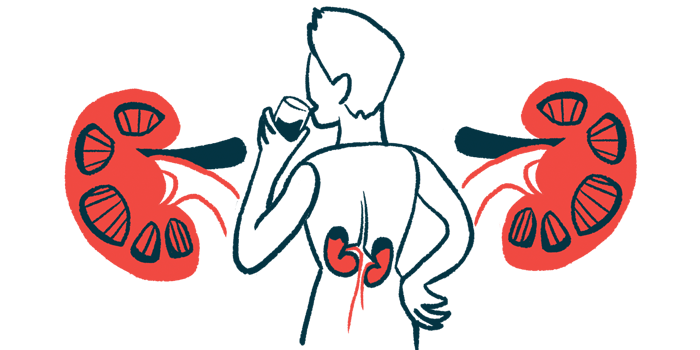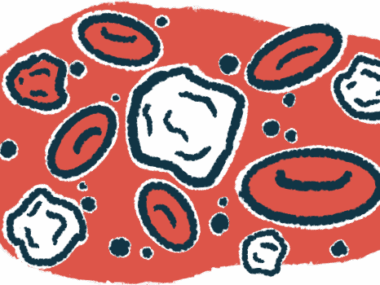Immune pathway could be MPA biomarker, therapy target: Study
Higher INF-I activity in kidneys corresponded to more severe damage
Written by |

The most common types of ANCA-associated vasculitis (AAV) show distinctive activity patterns of type I interferons (IFN-I), a group of immune signaling molecules, suggesting a possible route for individualized monitoring and treatment strategies, a study reports.
People with microscopic polyangiitis (MPA) and associated kidney disease had more IFN-I activity in their kidneys than those with granulomatosis with polyangiitis (GPA) and related kidney disease. Greater IFN-I activation corresponded to more severe kidney damage and poorer kidney survival.
These results suggest that “targeting IFN-I pathways, using small molecules or biologics, presents a promising therapeutic approach, especially for MPA cases,” researchers wrote.
The study, “A stronger type I interferon signature distinguishes ANCA-associated vasculitis phenotypes and predicts kidney prognosis,” was published in the journal Kidney International.
MPA and GPA often cause inflammation of the kidneys’ filtering units
In AAV, abnormal immune attacks lead to inflammation and damage in small blood vessels. Most cases are caused by self-reactive antibodies, called ANCAs, that most commonly target one of two proteins, myeloperoxidase (MPO) or proteinase 3 (PR3).
Although AAV symptoms can vary depending on the impacted areas, kidney damage is typical. Both MPA and GPA often cause glomerulonephritis, or inflammation of the kidneys’ filtering units, called glomeruli, which can lead to kidney failure.
MPA and GPA tend to have different patterns of symptoms and distinct microscopic signatures in inflamed tissue. Most people with MPA also have MPO-targeting ANCAs, while people with GPA typically have ANCAs that target PR3. However, disease type and antibody targets don’t always line up.
Treatment approaches may vary depending on disease type and symptoms, but overall strategies are generally similar for MPA and GPA.
“The identification of reliable biomarkers to guide individualized therapy is urgently needed to refine treatment approaches and improve patient outcomes,” the researchers wrote.
To address this, a team of researchers in France and Germany assessed kidney and blood samples from 193 people with AAV and glomerulonephritis in two research registries.
28 genes significantly more active among MPA patients
A total of 129 people had an MPA diagnosis, and 64 had GPA. The median age was 67, and most (60%) were men. As expected, 91% of the MPA group had anti-MPO ANCAs, and 88% of the GPA group had anti-PR3 ANCAs.
When comparing participants’ kidney tissues, the team found 28 genes that were significantly more active among MPA patients and two genes that showed significantly higher activity in GPA patients.
The top 12 genes with different activity between groups were part of the IFN-I signaling pathway. People with MPA showed significantly higher activity of all but one of these IFN-I-related genes relative to people without glomerulonephritis (controls), while in the GPA group, this was true only for five of the 12 genes.
This kidney IFN-I signature “was validated through multiple methods and [data sets],” the researchers wrote, with MPA patients showing significantly more IFN-I activity in their kidneys than GPA participants.
Across disease types, more active IFN-I signaling correlated significantly with more glomeruli and kidney damage. It also corresponded to significantly higher infiltration of several immune cell types into the kidneys, a sign of autoimmune activity.
Participants with high IFN-I activity in their kidneys also had over threefold higher odds of developing kidney failure. This suggests that measuring IFN-I activity in the kidneys could be a valuable way of estimating AAV prognosis.
Although AAV is not traditionally considered an IFN-I-driven disease, our findings, along with emerging evidence, suggest that IFN-I activation may play a key role, particularly in MPA.
When analyzing blood levels of IFN-alpha, an important signaler in the IFN-I pathway, the team found that MPA and GPA participants had significantly higher IFN-alpha activity than controls. However, no notable distinctions emerged between AAV types.
Still, higher blood IFN-alpha levels were significantly associated with higher activity of IFN-I-regulated genes in the kidneys of MPA patients, but not of GPA patients.
This difference in IFN-I activity patterns between kidneys and blood may be related to differences in disease course between AAV types, the researchers hypothesized. MPA tends to be associated with higher rates of kidney involvement and a chronic course. This could mean the kidneys have sustained IFN-I activity while the rest of the body doesn’t, leading to measurable differences in the kidneys but not the blood.
“Although AAV is not traditionally considered an IFN-I-driven disease, our findings, along with emerging evidence, suggest that IFN-I activation may play a key role, particularly in MPA,” the team wrote.
Further studies are needed to determine whether kidney IFN-I activity is a cause or a result of AAV. If elevated IFN-I signaling does drive disease development and activity, interventions to suppress the IFN-I pathway could potentially be of benefit to MPA patients.
“Future research should explore the role of IFN-I signaling in immune cell recruitment and [kidney] injury, with a focus on evaluating IFN-I [suppressors] in clinical trials for MPA specifically,” the researchers wrote.
They noted that future studies should also evaluate whether levels of interferon-induced proteins in urine could be used to noninvasively monitor IFN-I activity in the kidneys.
“Such biomarkers, if identified, would further support IFN-I’s role as a therapeutic target and prognostic indicator,” the team wrote.







